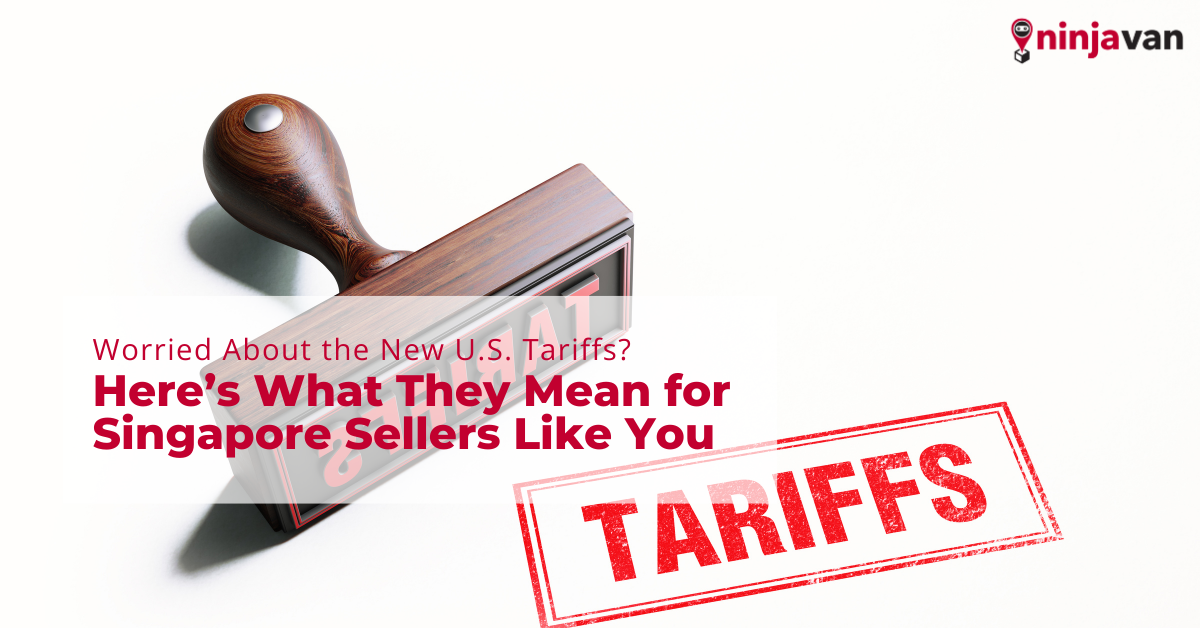Singapore Sellers: What the 2025 U.S. Tariff Means for Your Business

Search “US tariff” or “Trump tariff” and you'll see headlines dominating the news since 2 April 2025.
The U.S., still one of the world’s largest consumer markets, has introduced sweeping trade policy changes that could significantly affect Singaporean businesses selling to American customers.
Here's what the new tariff rules (effective April and May 2025) mean for you.
1. All Imports Will Now Face a 10% Tax
Starting 5 April 2025, all goods imported into the U.S. will face a baseline 10% tariff, regardless of product category or country of origin. This across-the-board US tariff applies to everything — apparel, electronics, accessories, and more. Singapore's exports are currently subject only to the universal 10% tariff, without any additional increases.
These new rates resemble the “Trump China tariff” strategy first implemented during the 2018 U.S.-China trade war. This time, however, the policy casts a wider net, with implications that could affect a broader range of international sellers.
2. Sourcing from China, Vietnam, or Thailand? Expect Even Higher Tariffs
From 9 April 2025, the U.S. will impose “reciprocal tariffs” on goods from around 60 countries, including:
- China: 34% (on top of existing duties, bringing total to 54%)
- Vietnam: 46%
- Thailand: 36%
- India: 26%
- Japan, South Korea, Taiwan, and the EU also face increased rates
Remember, this applies based on country of origin, not where the item is shipped from — making China tariff exposure a real concern.
3. No More Duty-Free for Small Parcels from China & Hong Kong
Previously, items under USD $800 could enter the U.S. duty-free under the de minimis exemption. However, from 2 May 2025, this will no longer apply to shipments from China and Hong Kong.
Affected parcels will now face:
- A 30% ad valorem import duty, or
- A flat fee of USD $25 per item — whichever is higher
- From 1 June 2025, the flat fee increases to USD $50 per item
This policy directly targets low-cost imports from platforms like Shein, Temu, and AliExpress.
What this means for Singapore businesses: You may benefit from reduced competition from low-priced products, but if your business relies on dropshipping from China or Hong Kong, you’ll need to factor in the potential cost impact.
What Should Singapore Sellers Do Now?
- Review Product Sourcing Strategy
If your supply chain touches high-tariff countries like China, Vietnam, or Thailand, your landed cost may rise significantly.
Here's what to do:
- Diversify sourcing to countries not affected by additional US tariffs
- Ensure your country of origin declarations are accurate — incorrect or misleading data may lead to shipment delays or penalties
2. Recalculate Pricing Strategy
With a 10% baseline tariff (and potentially additional rates depending on the commodity), your total landed cost will shift. Revisit your pricing structure to account for:
- Tariff news updates
- Shipping fees
- U.S. customs charges
Even minor changes can translate to big shifts in margins, especially if you're dealing with fast-moving consumer goods.
3. Partner with a Logistics Expert Early
Navigating these evolving rules alone can be overwhelming. Teaming up with an experienced logistics provider gives you an edge in:
- Accurate HS code classification to avoid overpaying duties
- Smart supply chain planning to minimise cost and delays
- End-to-end compliance with U.S. regulations, from forms to inspections
If you're still unsure about the tariff meaning, how it's applied to different product categories, or even what is a tariff in practical terms, you're not alone. These aren’t just technicalities — they directly affect what you pay, how you declare your shipments, and your product’s final pricing.
This is where the right partner helps you stay ahead — ensuring compliance, reducing risks, and protecting your margins..
Final Word
As this latest U.S. trade policy evolves, staying agile is your best move. Rethink your sourcing, adjust pricing, and lean on experts to weather this new trade landscape.
The faster you adapt, the better positioned you’ll be to keep serving U.S. customers competitively.


